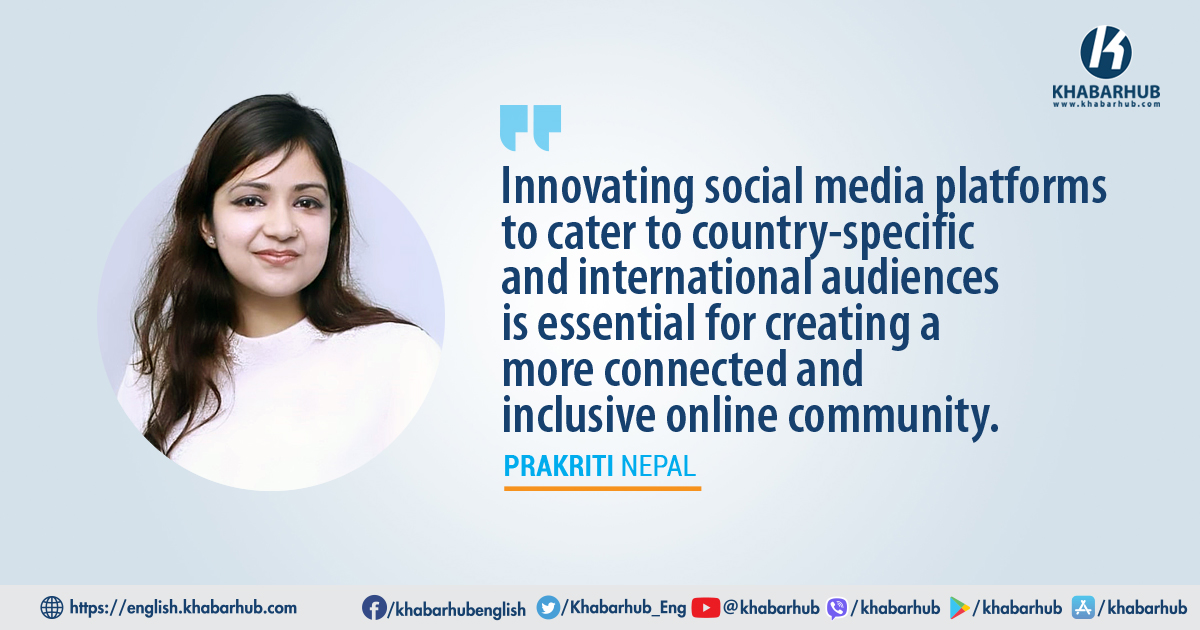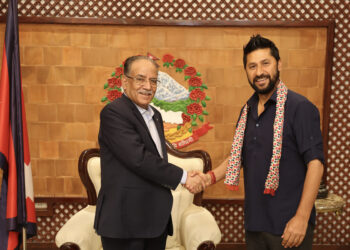The fusion of communication and social media is reshaping our collective understanding and experiences in today’s digital era.
Communication serves as the conduit through which stories traverse, connecting individuals from diverse cultures, backgrounds, and geographical locations.
Meanwhile, storytelling, serving as a universal communication medium, intricately weaves narratives across the globe, fostering empathy, comprehension, and engagement among audiences.
Social media platforms amplify these narratives, providing a global stage where voices are magnified, and experiences are shared instantaneously.
From viral tweets to captivating Instagram posts, social media has revolutionized how we interact and consume content, enabling us to connect with others, express ourselves creatively, and drive societal change.
In Nepal, storytelling has endured since ancient times, even long before the advent of modern communication technologies or the influence of colonialism.
Treasured tales like “Ekadeshma” and the renowned “Gaunkhanekatha” have shaped the childhood experiences of successive generations.
Thus, storytelling is a foundational element of our heritage, illustrating its capacity to captivate audiences and convey intricate concepts through narrative-based learning steeped in our culture.
Tailoring features, content, and user experience to meet different regions’ diverse needs and preferences is essential for creating a seamless and engaging platform for users worldwide.
Furthermore, storytelling possesses the potential to fuel innovation and drive behavioral change, particularly within the realm of education reform.
Storytelling can catalyze transformative educational practices by emphasizing the importance of peer-to-peer sharing facilitated through multilingual communication.
It inspires a sense of curiosity, encourages critical thinking, and promotes knowledge exchange among peers across linguistic boundaries, thereby fostering a culture of innovation and adaptability in education.
Despite the significant role that social media plays in communication and information dissemination in the 21st century, it’s essential to tailor these platforms to serve educational purposes and foster meaningful dialogue.
Enhancing access to educational materials through social media that contribute to the nation’s education, health, and economic development is crucial.
One way to achieve this is by incorporating features like the “I want to Learn” buttons, which offer audio and video books, igniting curiosity among eager learners.
However, examining historical trends in information sharing inherited from colonial times is equally vital to addressing digital educational disparities effectively.
This examination ensures the equitable dissemination of information and promotes necessary changes in social media platforms.
Leveraging social media for communication is not merely about broadcasting messages but also about fostering meaningful dialogues.
Features like “quick question” buttons can encourage users to engage actively in discussions.
Additionally, virtual storytelling events organized on social media platforms offer a unique opportunity for participants to connect, share experiences, and challenge societal norms.
By embracing storytelling’s transformative power as a communication method and harnessing social media’s effectiveness as a powerful tool, we can initiate significant societal transformations within Nepal and extend them beyond its borders.
By promoting critical thinking and reflection, these events empower individuals to question and dismantle colonial ideologies that may still influence societal attitudes.
Moreover, Nepal’s rich linguistic and cultural heritage have shaped its communication patterns over centuries. Incorporating culturally relevant themes and topics into social media platforms can enhance user experience and promote inclusivity.
Tailoring features, content, and user experience to meet different regions’ diverse needs and preferences is essential for creating a seamless and engaging platform for users worldwide.
Features like advanced search options that support multiple languages contribute to inclusivity and accessibility.
Furthermore, facilitating collaborations and interactions between users from different countries fosters global connectivity and encourages cross-cultural exchange.
Innovating social media platforms to cater to country-specific and international audiences is essential for creating a more connected and inclusive online community.
Thus, when considering the storytelling aspect of communication to bring about constructive societal transformation, access to analytics and insights on audience demographics, interests, and engagement metrics for country-specific and international audiences becomes crucial for delivery through social media.
By embracing storytelling’s transformative power as a communication method and harnessing social media’s effectiveness as a powerful tool, we can initiate significant societal transformations within Nepal and extend them beyond its borders.









Comment